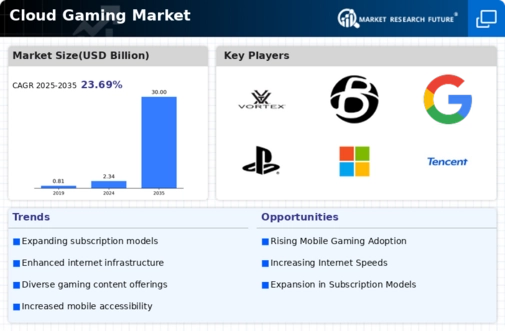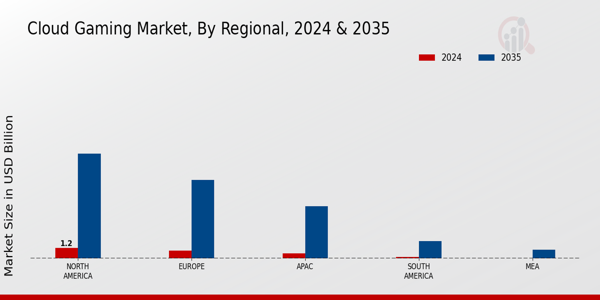Cloud Gaming Size
Cloud Gaming Market Growth Projections and Opportunities
The cloud gaming industry gets shaped by a variety of market factors, which impact its development, reception, and competitive scene. The increase of high-speed internet is making cloud gaming more famous among individuals. Now cloud gaming is more accessible, as more areas get faster and reliable internet. Cloud-based gaming platforms could attract non-gamers into gaming which can drive market growth. Another important factor that affects the market is the constant advancement of cloud infrastructure. Lots of cloud service providers are putting tons of money into making data centers better to provide quick gaming experiences.
This deals with one of the persistent difficulties in cloud gaming, which is input delay. With the growth in the strength and reliability of cloud infrastructure, gamers can expect improved graphics as well as a seamless gaming experience. Furthermore, major players in the cloud gaming industry have a significant impact on the competitive landscape. It seems that tech giants and gaming companies are constantly fighting to be the top in their industry through intense competition.
This competition forces companies to constantly improve their products and services in order to attract and retain users. The main competitors are playing a huge role in determining how the market operates and making progress in the field of cloud gaming technology. Cloud gaming platforms have business models which affects the market. Game libraries are popularly accessible through monthly or yearly subscriptions. This software generates a constant source of income for service providers and increases satisfaction among users. Just like many other companies, they also follow the trend of giving customers access to content on a subscription basis. These business models help in the growth and sustainability of cloud gaming. Gaming companies are working with cloud service providers and telecommunication companies to form partnerships that are impacting the overall market. By forming alliances, gamers can combine their strengths to benefit the overall gaming experience. Some phone companies may combine online gaming with their internet deals, which provide customers with an all-in-one package for enjoyment. These kinds of partnerships help growing the market and makes cloud gaming more readily available to more people.
















Leave a Comment